We think of the Hawker Hurricane as the workhorse of the Battle of Britain and, while generally acknowledged to be not as fast or glamourous as the Spitfire, most pilots found it to be a highly efficient gun platform that could take a lot of punishment. Most, but not all.
Some 14,500 Hurricanes were built during the war and they served everywhere; over Britain, over Europe, the Far East, the Mediterranean, North Africa, over the Atlantic Ocean & Norwegian Sea from aircraft carriers (the Sea Hurricane), while single-use Hurricanes were catapulted from merchant ships… and in Russia.
3,000 Lend-Lease Hurricanes were delivered to our Russian allies where they were gratefully, but not enthusiastically, received.
Soviet pilot, Vitaly Klimenko was brutal in his assessment. On the 1st December 1941 his Reserve Air Regiment was re-equipped with Hurricanes.
“It was a piece of junk rather than a fighter!” said Klimenko¹ “A MiG might be clumsy at low altitude, but when flying higher I felt like a king. In comparison the Hurricane was slow and unwieldy – its wings were too thick.”
His other criticisms covered the pilot’s armour plate, which was too thin by comparison to Russian aircraft, and the armament: “At first eight machine guns in the wings seemed formidable armament, but the Hurricane’s ammo storage was minimal”.
And the Merlin XX engine displeased him too: “[they] were bad. They could overheat and jam even if you didn’t use engine boost”.
I’m no expert but I suspect the Merlin XXs, designed for 100 octane aviation fuel may have not been so happy on 95-octane Soviet fuel.
Similar complaints came from a number of Russian pilots, and I’ve been reading Igor Kabarov’s autobiography, ![]() ‘Swastika in the Gunsight‘ recently, where he adds a little more detail.
‘Swastika in the Gunsight‘ recently, where he adds a little more detail.
Kabarov flew with the Baltic Fleet Air Force defending Leningrad and won many medals, including Hero of the Soviet Union. During his 476 sorties – in which he fought 132 air battles and shot down 28 enemy aircraft – he flew a number of different aircraft types² including the Hurricane.
In May 1942 Kabarov’s regiment flew to a base near Leningrad to re-equip with new aircraft – Hawker Hurricanes.
“Here, waiting for us, were the new English fighters, Hawker Hurricanes. First of all, the size of the Hurricane struck us. Both in length and span, it was almost half as big again as our Yak. Humpbacked, on long ‘legs’, it seemed rather strange.”
Kaberov and his colleagues had to quickly get used to all the labels in English and measurements in imperial – altitude in feet, speed in miles per hour and fuel in gallons not litres. However, like Klimenko, they could not resign themselves to the armament.
“It had twelve wing-mounted machine-guns of rifle calibre – six in each wing. After our Soviet cannons and heavy calibre machine-guns, we considered this insufficient. Nor did we like the armour behind the pilot’s seat. It consisted of two vertically placed 4 mm plastic sheets, one above the other – and this at a time of high velocity cannons and armour-piercing rockets. ‘Why you could pierce it with a walking stick,’ said Sukhov, and we all agreed with him. Headquarters got to know about our dissatisfaction. We were ordered to fly immediately to Moscow in order to replace the armour and weapons on the Hurricanes.”
Before returning to his airfield with his upgraded Hurricane, a Russian test pilot, Vladimir Konstaninovich, tried Kaberov’s’ Hurricane out and afterwards declared that, while it was not a Yak, now that it was fitted with proper canons he thought it was possible to use it in aerial combat.
One thing they did notice on their homeward flight was that in calm level flight the Hurricane would first dip, then raise its nose. “That’s how it flew, bowing”.
Again I’m no expert, but I suspect that the alterations may have had something to do with the new flying characteristics.
Kaberov seemed resigned to it…
“I thought that the name ‘Hurricane’ hardly matched the technical qualities of the machine. The armament on it was now good – two 20 mm cannons and two heavy calibre machine-guns. One burst and pieces would fly off any aircraft. The armour plating (taken from our LaGG) was fine. Such protection was like a stone wall. The horizon indicator was also a wonderful instrument. It was easy to fly in the clouds with it. The radio worked magnificently, like a domestic telephone: neither noise nor crackle. But the speed, the speed. . . . No, this aircraft was far from being a hurricane. It was slow to gain height and was not good in a dive. As for vertical manoeuvrability – not good at all!”
“Yefimov, our Commissar, got it right: ‘The aircraft is fine; it’s metal, so it won’t catch fire. You can shoot from it. But instead of manoeuvrability and speed – you’ll have to use your Russian wits!'”
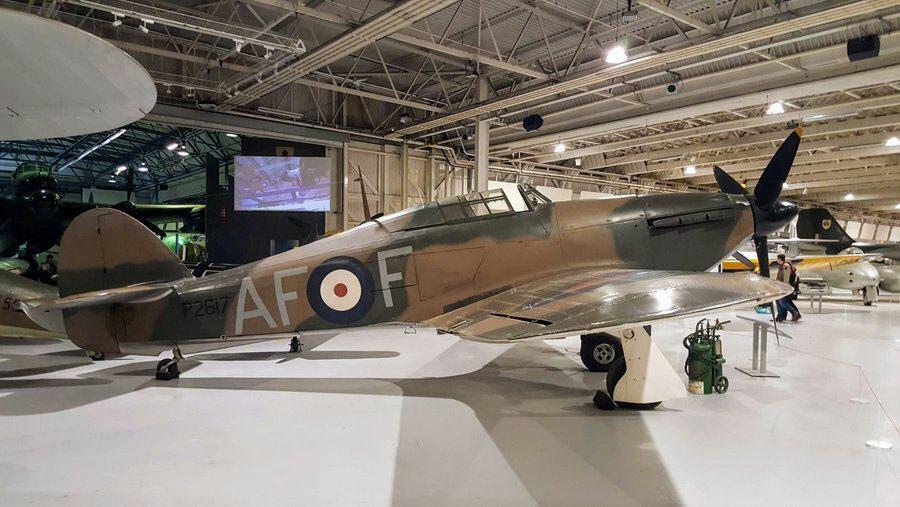
In May 1985 Igor Kaberov briefly visited the UK as part of a twinning (Novgorod & Watford) delegation. While he was here he was shown the RAF Museum at Hendon, and allowed to sit in the cockpit of a Hurricane. It could have been this one!
¹ One of the pilots featured in ![]() Barbarossa and the Retreat to Moscow: Recollections of Soviet Fighter Pilots, by Artem Drabkin
Barbarossa and the Retreat to Moscow: Recollections of Soviet Fighter Pilots, by Artem Drabkin
² He started out in the stubby Polikarpov I-16, flew the Mig 3 and Yak 1, and his favourite, the LaGG 3, and later the LaGG 5.

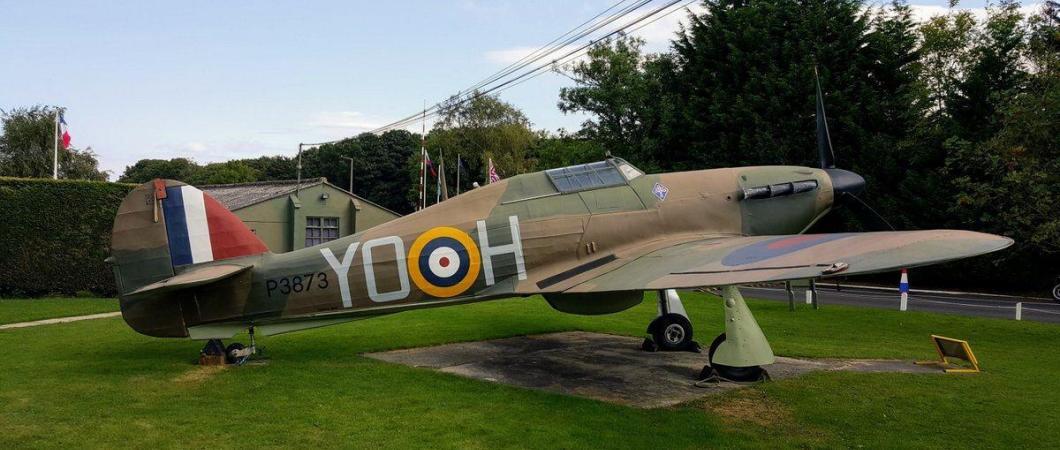

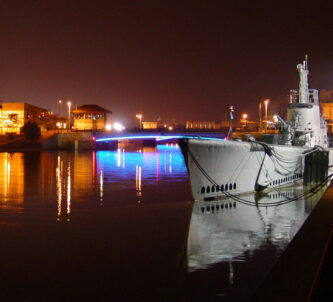
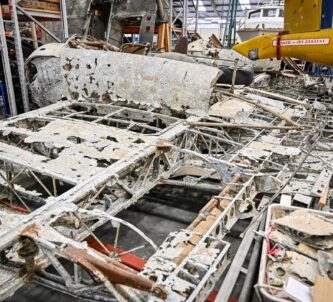

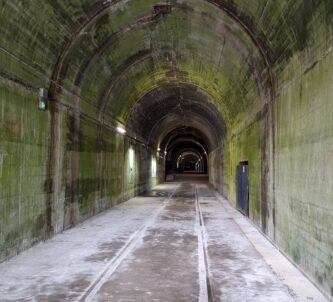

Stalin specifically asked for more Hurricanes armed with 40mm cannon (the Mark IID) as they were effective ground-attack aircraft. Source is telegram from Stalin to Churchill in Churchill’s The Second World War.
Hi Roger, I thought they had plenty (well, nobody had ‘plenty’) of IL2s for that role. Still, the MkIID’s looked pretty formidable!
The hurricane was not the greatest fighter in WW2 but in the B of B that is all we had. So that is what the Russians got. Why we did not have a 20mm gun when the Russians Japanese and Germans did I have never found out? But it cost us dearly. Our boys took many losses turning Back the German onslaught on Brittain with only peashooters. Military blindness. Haig and his stupid under estimate of the machine gun cost us thousands of boys in WW1
I rather suspect a fair amount of this criticism was politically motivated. Even if the Hurricane had been superior to Russian fighters, it wasn’t the done thing to publicly praise the products of western capitalism/imperialism.
“Yefimov, our Commissar, got it right: ‘The aircraft is fine; it’s metal, so it won’t catch fire. You can shoot from it. But instead of manoeuvrability and speed – you’ll have to use your Russian wits!’”
Yefimov obviously didn’ t do his research. The Hurri was far from a metal aeroplane!
Wow… that was quick censorship. Hitler would be impressed… and likely a little jealous.
Russia is evil and the Hurricane is perfect… that is me put in my place.
Amazing that it happened so quickly that the country that kept 2/3rds of the German military tied up for crucial years of the war have gone from the saviours of the west to the enemy, and a bunch of ungrateful sods.
Pretty clear who the ungrateful sods are though.
Totally agree, could have been me writing. Hurricanes forever!
The Molotov Rippentrop pact is interesting… being a Kiwi I grew up learning the British version of events… evil allies Hitler and Stalin cut Poland in half and took one piece each.
They didn’t tell me the piece the Soviets took was the piece the Germans didn’t want because it was part of Russia before WWI that the Poles took in their 1917-1922 invasion of Russia.
Stalin approached the british for military pact and the british told them to talk to the poles and so they approached the poles for a military alliance and the poles told them where to stick it.
When Germany was devouring countries in Europe Poland was happy to seize bits they wanted too, for which they get no criticism.
If Russia had not signed the Molotov Rippentrop pact Germany would have started their invasion of Russia much closer to Moscow.
It was also a non aggression pact, rather than a peace treaty, so pretty much the same as what Chamberlain signed with Hitler a few years earlier.
Amusing that some are upset that these pilots didn’t love the western stuff they used during WWII… the top western aces in these aircraft were all Russian so they certainly had the experience… especially the ones that didn’t survive and there were a hell of a lot more of those than westerners complaining now on the internet that the Russians didn’t love western stuff.
@ John Campbell I hope your are not a Russophobia. It does sound like it. First of all they’re entitled to their opinion. Secondly the British complained about American fighters also.And also ,are you one of those those people who calls others to be trolls just because they stand up for the Russians or anyone else you don’t like? I am an American. I watched my fellow compatriots express a lot of hate towards other Americans of Russian origin. I have seen that it was never about anti-communism,but every thing to do with race. It was disgusting to see growing up.
Ok, good points, Mark. Esp Brits complaining about American fighters.
As an aside, and for everyone commenting, I’m concerned about tone. I normally simply delete comments that make derogatory comments about other commenters (and have already on this thread). They never see the light of day. This one sails close to the wind, but the sentiments you express about hate and anti-communism are worthy points. Disagreement is fine. Criticism and correction of post content is fine, as long as it is not personal.
It is not surprising the Soviet pilots had these opinions, by the end of the Battle of Britain the .303 as an aerial weapon had seen its day, and that is evidenced by the absurdity of twelve of them in the Hurricane. They were also doing their fighting at lower altitudes than was happening over Germany and France so a thoroughly adequate aircraft for the RAF might not be useful for the Soviets. “Usefulness” is should always be taken into consideration, the same P39 that the Soviets put to good use was a poor performer in the Pacific. The Fins did pretty well with the universally reviled Brewster Buffalo. That said, most pilots especially line pilots are prone to measure other aircraft with the yardstick of the type they’re most familiar and satisfied with. They’ll see them through the prism of their prejudices. Most German pilots who flew the Hurricane and Spitfire were disappointed with their dive capabilities. British pilots didn’t like how the 109 wasn’t as maneuverable as the Spit. Germans used to the snug cockpit of the 109 found the size of the P47 cockpit disconcerting. The Germans generally liked the P51 but thought it’s cockpit was unnecessarily complicated with too many levers and switches.
All good points, Allen. TY 🙂
You’re welcome.
I am very much an amateur historian and can’t really comment on the technical details presented here. But, I do believe that, generally speaking, the Soviets were extremely adept at biting the hand that fed them, especially on all things “lend-lease”. Perhaps it was done to cover their embarrassment at being so woefully unprepared for the Nazi onslaught. But, I don’t recall any stories of fighters or tanks or trucks being rejected out of hand when they rolled off the ships at Archangel and Murmansk. I bet the relatives of the British, Canadian and American sailors and airmen who died getting those supplies to the Soviets would have probably enjoyed a few moments alone with one of those ungrateful sods.
Hi John,
Interesting. I think I agree with you, at least in part.
I think, for form’s sake, they were good at biting the hand that fed them, as a sort of cultural expression of independence. These quoted opinions were written in memoirs intended for a Russian domestic readership, and while I think they were genuine, there’s probably also an element of ‘not what we are used to’. The factual parts of the argument were accurate. The Hurricanes they got didn’t have the armour Russian pilots were used to, nor the canons.
Thanks for your reply, Alastair. I’m not disputing the technical details but I cannot feel any sympathy for those whiners when it was their own cupidity and the Molotov-Ribbentrop Pact that got them into the mess in the first place. The Poles who fled the Soviet invasion on September 17, 1939 and later flew the Hurricane seemed to find them perfectly adequate, or at least had the good manners to keep any criticism to themselves, despite the horrible treatment they received at the hands of the British.
About Poles who was flying Hurry at that time and didn´t criticise loudly. You do know ( I hope) that they didn´t have any experiences whit any better planes? They flew on PZL P-11c or maybe some French Morane-Saulnier MS.406. And whining about someone who save your ass from Jerry is just… so lame.
I find this really interesting, I never knew that the Russian pilots had such a low opinion of them. I’d always believed, that they would get you home, even after a lot of punishment, and were a very stable gun platform. Also terrific turn in? I wonder if, there was a propaganda element involved? Would pilots have shouted so loudly, or (more to the point) written down, the inadequacy of Soviet aircraft, and the fact, that there wasn’t enough of them, (hence using hurricanes) which would be a dig at the government… in Stalin’s Soviet Union, the pilots were extremely courageous, and definitely not stupid
Perhaps if the shoe was on the other foot and they had run away leaving Britain to fight the Germans on their own while selling you for top dollar T-26 light tanks and Polikarpov I-16 fighters and demanding and only publishing in Russia those few positive comments about such obsolete equipment there might be some complaints too maybe?
What embarrassment… the Nazis had already crushed the French and British armies and pretty much all of the rest of Europe… why would Russia be embarrassed towards?
Those American and British and Canadian Sailors an Airmen that did a fantastic job getting this obsolete equipment to the Soviets were probably very glad they didn’t have to fight the German onslaught on the Eastern front… for every one killed the Soviets lost thousands fighting the Germans… maybe if the western allies had sent better stuff in larger quantities they could have just sat on the sidelines and watched. Some more cynical eastern front experts might suggest that is what they did without sending the good stuff.
Before Lend-lease went into effect the Soviets had to pay for these out of their gold bullion reserves. Yet there were more spitfires than pilots trained on them at the time in Britain. Hardly the bargain.
Please see my earlier comments today. Britain was bankrupted paying the Americans for war supplies. And I suspect your Soviet “heroes” would have complained about the Spitfire too.
Supply of Hurricanes outstripped the number of available pilots in the BoB as well as later in the war. That is why Hurricanes were able to be exported. It was a surplus resource we could share with our Allies, despite being in a difficult spot. Supply of Spitfires was limited. Were Hurricanes useless? They shot down more German aircraft than everything else did in the BoB… Russians are known to be whiners. Pick a topic, they will whine about it. They didn’t like Spitfires either, as they were a tricky on the ground.
Thank you for your reply, Alastair. I was just wondering if described easier combustion qualities of Hurricanes upon being hit was commonly known/noticed among RAF pilots?
I’m afraid I haven’t seen/noticed any such reports. I’ll keep my eyes open now, though. 🙂
Interesting. Very much at odds with allied pilots assessment of the ‘Hurri’ as they liked the thick wings as much more stable gun platform for 8 MGs (with tracer/explosive rounds?) than the Spit’s thin wing plus it could outurn/outloop any German fighter – especially the ME109. It was however a lot slower in level flight than the 109. As for armour plating.. I don’t think the Allied fighters used plastic?? However, interesting from the Russian pilots point of view when compared to their ‘flying tanks’…
Hi Graeme, Yeah I wondered about the ‘plastic’ armour. Maybe something lost in translation?
I think I DO understand the reaction to the armament. If you were used to flying with a dirty great 20mm cannon and watching large chunks fly off your opponent, when the Hurri turned up with its “rifle calibre” machine guns, it must have felt like a downgrade. And since they replaced them straight away they would never get to see the effect of a synchronised cone of lead.
I just read the book “Baltic sky” by N. Chukovski (1946), He was a writer who had spent a lot of time with Russian pilots defending a sky above Leningrad. He wrote that when pilots received Hurricanes via lend-lease in 1942 and
started to flew them among all other things noted in the article they particularly were disappointed with how intolerable they were to enemy fire. According to them planes immediately burst in flame from any even insignificant hit by German planes. Before that they flew Russian I-16 which while being hit even multiple times were not nearly easy to set on fire like Hurricanes. At some point after loosing few Hurricanes in this fashion in one fight the higher rank command suspended pilots from flying them. I tried to look for confirmation of such an easier combustive weakness of Hurricanes and couldn’t find anything except this article.
Hi Ivan,
Interesting. Yes, I guess it’s not that every Russian pilot’s experience or impression of the Hurricane was bad, but there’s certainly a fair amount of anecdotal evidence!
This is the book, I was talking about (I read it in Russian):
https://www.amazon.com/Baltic-Skies-Nikolai-Chukovsky/dp/B001743CEO
Thanks. Will take a look 🙂
i believe the term plastic was actually bakealite (i may not have the spelling) as it was available during ww2 , being a mix of rubber and a type of ceramic.
Yes, that makes sense. Bakelite would be marginally tougher for armour.